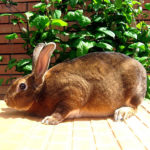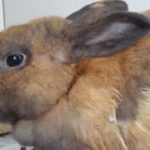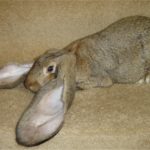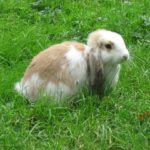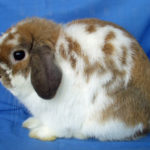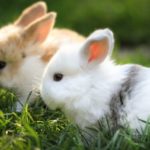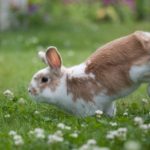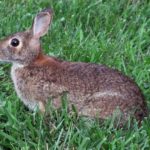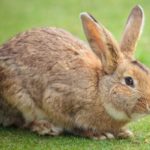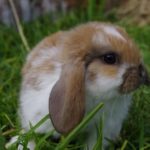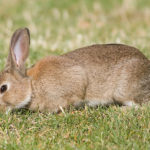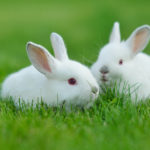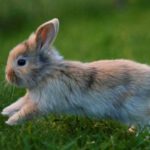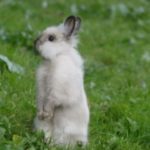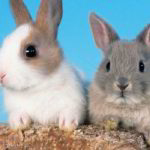Rabbits
 The main physiological parameters of the rabbits’ body: body temperature – 38.5 – 39.5 ° C, pulse 130-160 beats per minute, respiration rate 50-60 per minute.
The main physiological parameters of the rabbits’ body: body temperature – 38.5 – 39.5 ° C, pulse 130-160 beats per minute, respiration rate 50-60 per minute.
The main biological feature of rabbits is high reproductivity. Fertility is a phenomenon inherited. On average, the rabbit leads 6-9 rabbits for one okrol, and 12-16 rabbits are particularly prolific.
In rooms with a constant microclimate, rabbits reproduce almost all year round. They reach sexual maturity at the age of 3.5-4.0 months. Ovulation of eggs in females occurs when mating. Rabbits are born undressed and blind. At the age of 10-14 days they open their eyes, and at the age of 20-21, they start to get out of the nest and eat themselves. Therefore, the milk of females is judged by the mass of the entire offspring at the age of 20 days.
Bunnies feed the litter once a day – 4-5 minutes. During this time, the rabbit in the first days of life sucks up to 8 g of milk, and at the age of 30 days – about 30 g. Rabbits, Rabbits. General information that for any reason skip feeding or receive insufficient amounts of milk, lag behind in growth and often die. Therefore, in order to reduce the mortality of offspring, it is very important to take into account the maternal qualities of the female. Bunnies can combine lactation with another pregnancy.
Stomach in rabbits is single-chambered, horseshoe-shaped. Because of the small volume of the stomach, they often eat (up to 30 times a day), spending 5-10 minutes for each meal. Since the young animals have less stomach than adults, and the need for a growing organism in the diet is high, the frequency of food intake is twice as high. This requires a special feeding regimen.
Rabbits are born with 16 milk teeth. The change of milk teeth to permanent teeth occurs at the age of 18-2O days. Adult rabbits have 28 teeth. Without roots, incisors continue to grow throughout life. Constantly eating stalked plant food and bark of young trees, rabbits grind their teeth, which could reach very large sizes. Rabbits are well developed in hearing, smelling and taste, and worse – with sight.
